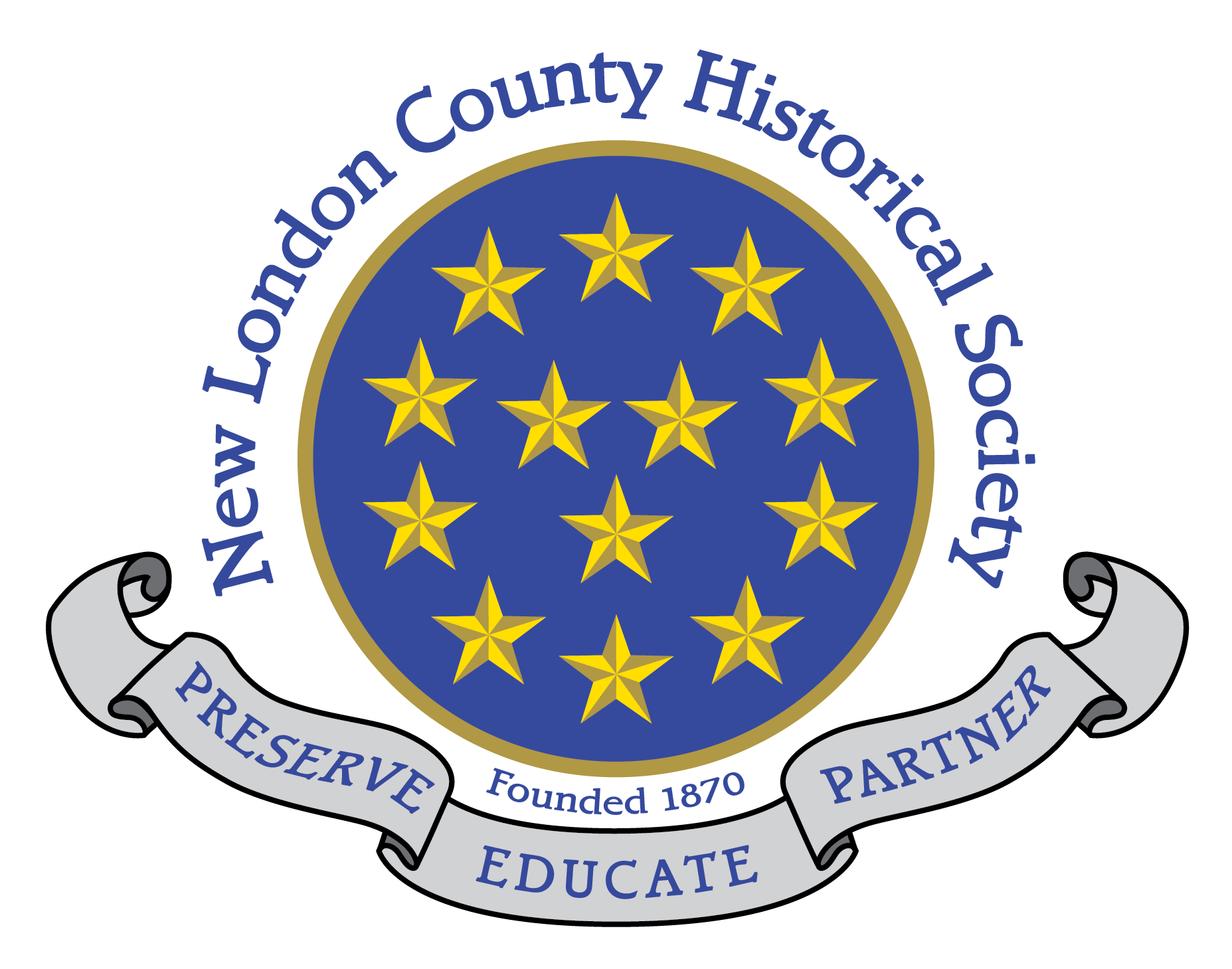The National Endowment for the Humanities awarded a “We the People” grant to the New London County Historical Society to fund the creation of a preservation plan for the 55 oil paintings in its collection. Nationally recognized painting experts, Lance Mayer and Gay Myers, independent conservators associated with the Lyman Allyn Art Museum, are conducting an intensive survey of the collection in order to create the plan.
James Leach, Chairman of the NEH writes, “The goal of the ‘We the People’ initiative is to support projects that explore significant events and themes in our nation’s history.” The society’s collection has a number of outstanding components with six Ralph Earl portraits commissioned for the Shaw family in 1792, and a large number of ships’ portraits and ships’ captains’ portraits associated with New London’s whaling years. In the Thomas Shaw portrait, Earl included a view in the background of Fort Trumbull with a large American flag flying over it. This alone makes this painting an important document of our nation as there are fewer than 100 images of the American flag that have been identified as being created prior to 1800.
Meyer and Myers clients have ranged from the Guggenheim Museum to the Art Institute of Chicago, and more locally, the Yale Center for British Art and the Wadsworth Atheneum. In 2009 they treated “Washington Crossing the Delaware” for the Metropolitan Museum of Art. Their scholarly work on 18th and 19th century painting techniques has been shared in numerous articles and conference presentations.




![FOAL[1] FOAL[1]](https://www.nlchs.org/wordpresswp-content/uploads/2010/03/FOAL1-300x238.jpg) Tuesd Mar .1. . . .wee got home [from his farm in Stonington] Sun about an hour high and wee buried the Child at Sun down. . . . Saturd 5. . . I was at home al Day. Josh brot home the mare & Colt & left the young Horses. . . Mond .7. fair & Cold & windy. I went to Groton to John Averys to Assist in an arbitration . . . Tuesd 15 it Snowed & Rained most of the Day. I was at home foren. afternoon helping measure 100 Rod of Land for Dea. fosdick Hills Lot Next Jno Plumb taken by Execution for Charlots Debt. Wednsd 16 fair & warm. I was at home al day. foren helping Adm draw S[t]ones. aftern pruning Appletrees. Thursd 24. . . I was Laying out Commons . . . I am to Receive 7s 4d of Dea Fox. the Rest are pd & I Recd 2s 6d for Abel Moors part of Dea Fosdick.
Tuesd Mar .1. . . .wee got home [from his farm in Stonington] Sun about an hour high and wee buried the Child at Sun down. . . . Saturd 5. . . I was at home al Day. Josh brot home the mare & Colt & left the young Horses. . . Mond .7. fair & Cold & windy. I went to Groton to John Averys to Assist in an arbitration . . . Tuesd 15 it Snowed & Rained most of the Day. I was at home foren. afternoon helping measure 100 Rod of Land for Dea. fosdick Hills Lot Next Jno Plumb taken by Execution for Charlots Debt. Wednsd 16 fair & warm. I was at home al day. foren helping Adm draw S[t]ones. aftern pruning Appletrees. Thursd 24. . . I was Laying out Commons . . . I am to Receive 7s 4d of Dea Fox. the Rest are pd & I Recd 2s 6d for Abel Moors part of Dea Fosdick.